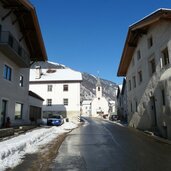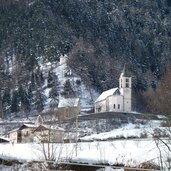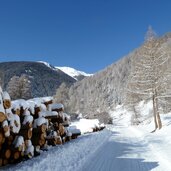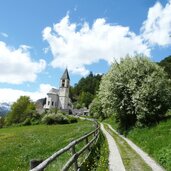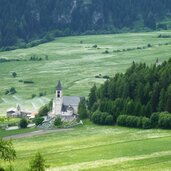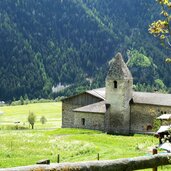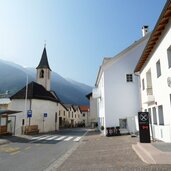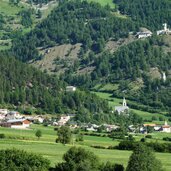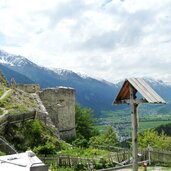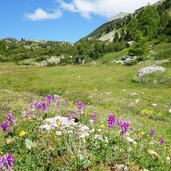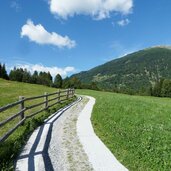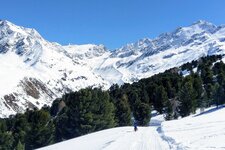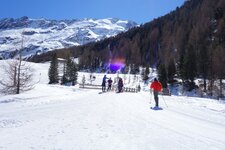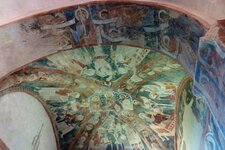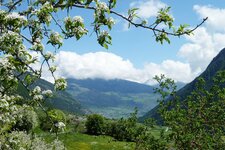In the main village of Tubre, eight churches with remarkable frescoes and fascinating stories await you
Image gallery: Tubre village
At Laudes near Malles Venosta, the road branches off into the side valley that follows the Rio Ram stream and leads towards the Stelvio National Park and Tubre village (Taufers). The main village of Tubre, the westernmost municipality of South Tyrol, is located a few kilometres up the valley, near the Swiss border. With a primary school, post office, shops, town hall, bars and restaurants, it is the main service centre for the South Tyrolean part of the Val Monastero.
A road ran here even in Roman times. Its churches and castles, in particular, characterise the rural village. On the hill above Tubre village, the castle ruins of Rotund and Reichenberg are perched. In addition, there are eight churches. At the village entrance, three of them welcome you straight away, each one more worth seeing than the last: St. Blaise is the parish church of Tubre, while the St. Michael cemetery chapel behind it houses the St. Michael Parish Museum and its treasures.
Then there is the St. John votive church, whose history dates back to the 9th century. It is probably the oldest building in the valley and houses an old depiction of St. Christopher on its north wall, as well as valuable frescoes inside. Near Tubre, the Avinga Valley branches off, an extensive natural area with beautiful hiking trails to Tubre's high alpine pastures and other tranquil spots. In winter, this is where the municipality's only cross-country ski trail and toboggan run can be found.
The cold season - or more precisely, the first days of March - is also a special time in the village: You can hear cowbells, pranks are played, and young people in traditional farmers' smocks throng the streets. It is the ancient custom of "Winterausschellen" (ringing out the winter), also known as "Chalandamarz" (first day of March), during which the spirits of spring are awakened.

